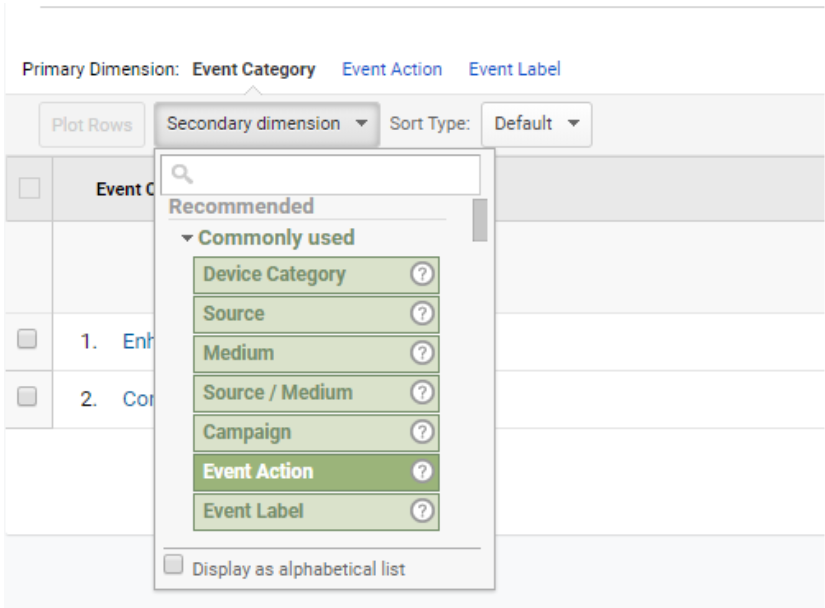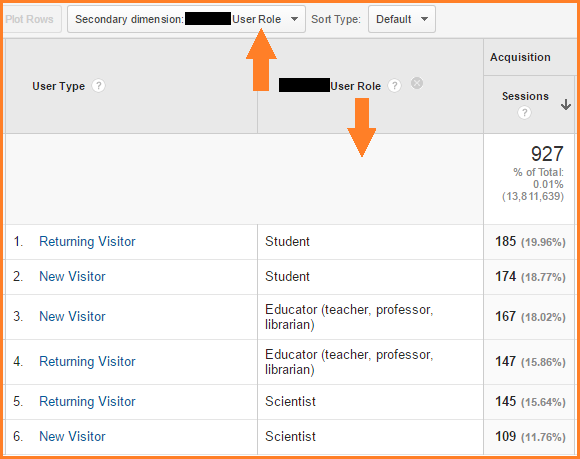Secondary Dimension in Google Analytics: Ideal Practices and Tips
Secondary Dimension in Google Analytics: Ideal Practices and Tips
Blog Article
Unlock Deeper Insights With Second Dimension in Google Analytics
With the vast area of data offered in Google Analytics, the utilization of additional measurements can dramatically enhance your analytical capacities. By purposefully including additional measurements into your analysis, you can discover beneficial understandings that may or else continue to be obscure - Secondary Dimension in Google Analytics.
Comprehending Main Vs. Secondary Measurements
When evaluating data in Google Analytics, it is important to distinguish in between main and second dimensions to acquire much deeper insights into customer behavior. Key dimensions are the main categories whereby you can watch your information, such as source/medium, gadget, or landing web page. These measurements supply the basic framework for organizing and recognizing your data. On the other hand, secondary dimensions permit you to more explore your primary measurement information. By adding a second dimension, you can layer on extra details to your key dimension, making it possible for a much more granular analysis. For instance, if your primary dimension is the source/medium where customers showed up on your website, including a second measurement like geographical area can reveal where those individuals are located geographically. When looking at the main dimension alone, this included layer of information can help you determine fads, patterns, or abnormalities that may not have been obvious. Leveraging both secondary and primary dimensions in Google Analytics is critical for extensive information analysis and educated decision-making.
Making Use Of Second Dimensions Effectively
Efficiently making use of second measurements in Google Analytics improves the depth and granularity of data analysis, supplying important insights right into individual habits and fads. By including second measurements alongside primary dimensions, experts and marketers can dig much deeper right into the specifics of customer interactions on their websites. Secondary dimensions allow customers to segment and filter primary measurement information better, supplying a more thorough sight of individual behaviors, communications, and demographics. This can be particularly valuable when attempting to comprehend the influence of certain variables on user interaction, such as the browsers or devices they are making use of, the sources of their traffic, or their geographic places.
Furthermore, secondary measurements enable users to compare and contrast different data factors within a solitary report, helping with a more detailed evaluation of individual actions patterns. By leveraging secondary dimensions effectively, services can reveal hidden understandings, maximize their advertising techniques, and improve the total individual experience on their sites.
Exploring Common Additional Dimension Mixes
To additionally examine customer habits and patterns in Google Analytics, it is valuable to explore common combinations of additional measurements. Some usual secondary dimension combinations that offer useful understandings consist of assessing website traffic resources with individual areas to recognize where website visitors are coming from geographically and exactly how they found the site. Examining user habits metrics with secondary measurements such as interests visit this web-site or demographics can aid in targeting specific target market sections extra properly.
Using Secondary Measurement in Custom-made Reports
Making use of additional measurements in customized records permits a much more thorough analysis of data in Google Analytics, improving the depth of insights acquired. When creating custom-made records in Google Analytics, incorporating additional dimensions can offer a much more in-depth sight of just how various measurements interact with each various other. This attribute allows individuals to dig much deeper into their information and uncover valuable correlations that may not be right away obvious.
By using second dimensions in custom records, customers can obtain a better understanding of their site or app website traffic. Integrating the main dimension of "source/medium" with the additional measurement of "touchdown page" can expose which landing web pages are doing best for web traffic coming from details sources. This understanding can assist marketing experts enhance their projects and enhance general conversion rates.

Enhancing Information Visualization With Secondary Measurement
When exploring information in Google Analytics custom-made reports, including second dimensions not only supplies an extra in-depth analysis yet additionally improves the graph of insights via data visualization. By including a secondary dimension to your reports, you can enhance the way data is offered, making it easier to recognize patterns, fads, and connections within your site's performance metrics.
Secondary measurements can aid you section your information additionally, allowing for a much deeper understanding of customer habits and communications on your website. This improved degree of granularity can be particularly useful when trying to separate certain variables that might affect your web site's efficiency - Secondary Dimension in Google Analytics.

Conclusion
To conclude, leveraging second measurements in Google Analytics permits an extra thorough analysis of information, leading to much deeper understandings and even more informed decision-making. Secondary Dimension in Google Analytics. By adding extra layers of info to main data sets, online marketers and analysts can discover covert fads, patterns, and correlations that give a granular sight of customer habits and communications. This improved degree of insight allows optimization of projects and tailored techniques for details audience sectors, inevitably improving efficiency and conversion rates
On the various other hand, secondary dimensions enable you to more study your key dimension data. By adding a secondary dimension, you can layer on added information to your key dimension, making More Info it possible for a much more granular evaluation. If your primary dimension is the source/medium through which individuals showed up on your site, adding a second dimension like geographical area can reveal where those customers are situated geographically. By including second measurements together with main measurements, analysts and marketers can dig much deeper right into the specifics of user communications on their websites. Additional measurements permit users to segment and filter key dimension data additionally, offering a much more thorough sight of customer communications, demographics, and behaviors.
Report this page